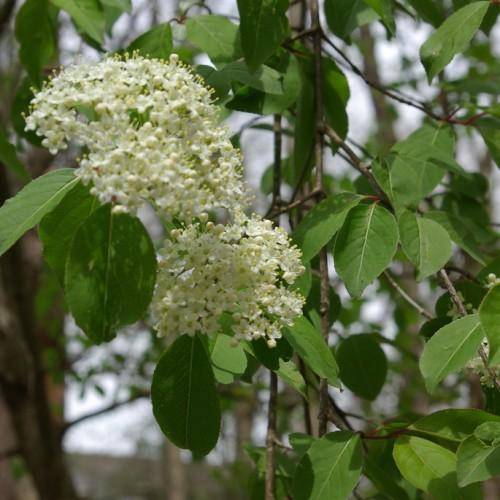
blackhaw viburnum
Viburnum prunifolium
Cycle:
Perennial
Watering:
Minimum
Hardiness Zone:
3 - 9
Flowers:
Flowers
Sun:
Full sun,part shade
Fruits:
Fruits Ready In Fall
Edible:
Yes
Leaf:
Yes
Growth Rate:
Low
Maintenance:
Low
Drought Tolerant:
Yes
Care Level:
Medium
watering
Blackhaw Viburnum should be watered deeply and infrequently. water once or twice a week in the summer months and every 2 or 3 weeks in winter. Aim to moisten the soil to a depth of 8-12 inches. Watering too frequently can lead to root rot and plant health issues. Avoid overhead watering and try to water slowly by using a soaker hose or drip system for the best results.
sunlight
Blackhaw viburnum (Viburnum prunifolium) requires 5-6 hours of direct sunlight per day for optimal growth and health. This can be achieved with full sun in the morning and/or late afternoon, or partial shade during the middle of the day. Sunlight intensity should remain consistent throughout the growing season; sudden or significant changes in light intensity can lead to plant stress and leaf discoloration. Additionally, take caution to avoid placing the plant in protection from cold winter winds that could cause damage.
pruning
Pruning blackhaw viburnums (Viburnum prunifolium) is beneficial to promote healthy growth and reduce the risk of disease. Prune in late winter or early spring before the plant begins to produce new growth. This will encourage the development of large flowers. Remove any dead, diseased, or damaged branches. Prune the plant back by up to 1-third its original size, making sure to leave some of the older wood. This will promote new growth and flowering from the base of the plant. Finally, thin out the branches to improve overall air circulation, decreasing the opportunity for disease.
